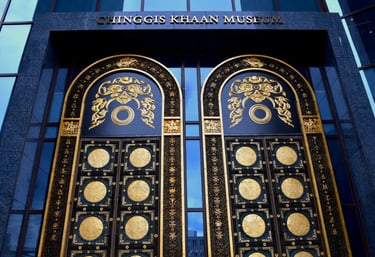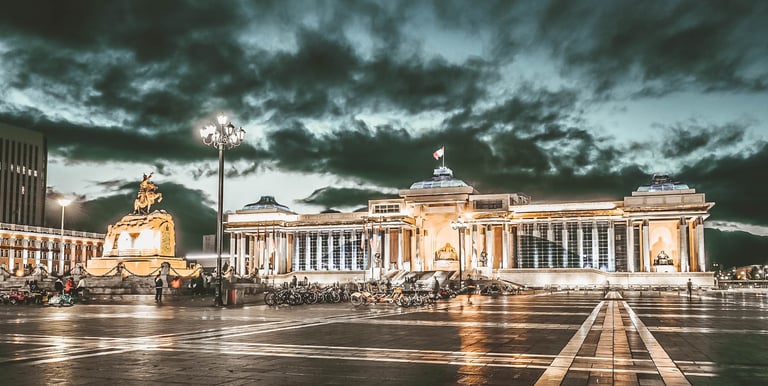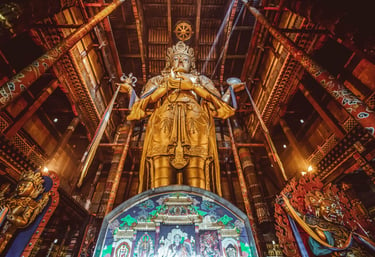
Ulaanbaatar city
Ulaanbaatar, the capital city of Mongolia, is a fascinating blend of modernity and tradition. It is located in north-central Mongolia, at an elevation of approximately 1,350 meters (4,430 feet) above sea level, making it one of the highest capitals in the world. As of 2023, the city's population is estimated to be over 1.5 million, accounting for about half of Mongolia's total population. The city is situated in a valley surrounded by mountains, with the Tuul River flowing through it. The climate is characterized by long, cold winters and short, warm summers.
Ulaanbaatar is the economic heart of Mongolia, housing many industries including mining, manufacturing, and services. The mining sector, particularly coal, copper, and gold, plays a significant role in the economy. The city has seen significant investment in infrastructure in recent years, including roads, public transportation, and housing developments. Ulaanbaatar is a cultural hub, showcasing Mongolia's rich history and traditions. The city is home to several museums, theaters, and cultural institutions.
Ulaanbaatar is a city where ancient traditions coexist with modern developments, making it a unique destination for those interested in exploring Mongolia’s culture, history, and contemporary challenges. Its significance as the political, economic, and cultural center of Mongolia continues to shape the country's future.


MUSEUMS
MUST SEE ATTRACTIONS IN ULAANBAATAR CITY
SUKHBAATAR SQUERE




ZAISAN HILL


GANDAN MONASTERY
Gandan Monastery is the largest and most important monastery in Mongolia, and it stands out as one of the most captivating attractions in Ulaanbaatar. Established in the mid-19th century, it uniquely maintained Buddhist services even during the communist era. The temples attract numerous visitors during religious ceremonies, which commence at 10 a.m. and continue until noon.
This is the central square located in Ulaanbaatar. Dominating the square is a prominent statue of Sukhbaatar, a renowned national hero, after whom the square is named. Surrounding the square are significant landmarks, including the Parliament House, the Stock Exchange, the Drama Theater, and the Cultural Palace.
Ulaanbaatar is home to several fascinating museums that reflect the country’s rich history, culture, and art. Here are some notable museums you might consider visiting:
· Chinggis Khaan National Museum
· National Museum of Mongolia
· Natural History Museum
· Choijin Lama temple Museum
· National Art Gallery
· Bogd Khaan Palace Museum
Zaisan Hill is a prominent landmark located in Ulaanbaatar city. Zaisan Hill is situated to the south of the city, about 10 kilometers from the city center. It rises to an elevation of approximately 1,750 meters (5,740 feet) above sea level. The hill is easily accessible and serves as a popular recreational area for both locals and tourists. The site reflects the historical ties between Mongolia and the Soviet Union, and it is an important cultural landmark in the city. Visitors to Zaisan Hill are rewarded with stunning panoramic views of Ulaanbaatar and the surrounding landscapes, including the vast steppes and mountain ranges. This makes it a favored spot for photography and sightseeing. Zaisan Hill combines historical significance, natural beauty, and recreational opportunities, making it a must-visit location for anyone traveling to Mongolia's capital.
